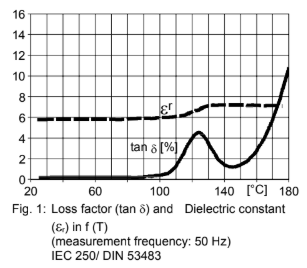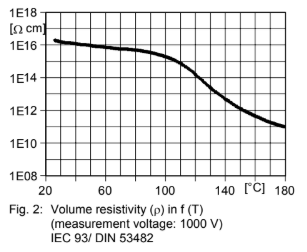Enhanced TDS
Identification & Functionality
- Chemical Family
- Fillers Included
- RTU Product Type
- Technologies
- Product Families
Features & Benefits
- Ready-to-Use Product Features
- Product Properties
- Resin / filler mixture shows minimal increase in viscosity when stored up to 140°C
- High mechanical end-properties of final part
- Excellent thermal shock resistance
Applications & Uses
- Composites Processing Methods
- Cure Method
- Product End Uses
- Markets
- Applications
- Applications
Applications
- Electrical insulation parts for medium and high voltage, such as switch components, bushings and spacer.
- In combination with Alumina filler mainly used for GIS insulating parts.
- Encapsulation of large metal parts
Processing methods
- Conventional gravity casting process under vacuum
Properties
- Physical Form
- Product Data (Guideline Values)
ARALDITE CT 2200 CI
Unmodified, Bisphenol A based epoxy resinsProperty Value Unit Test Method Condition Viscosity at 120°C 440 mPa*s DIN 53015 at 120°C Viscosity increase, 120°C/24h 6 % at 120°C for 24h Melting range 35-50 °C Epoxy content 2.45-2.70 equiv/kg ISO 3001 Flash point >200 °C DIN 51758 Density at 25°C 1.15-1.25 g/cm³ ISO 1675 at 25°C Vapour pressure at 130°C 0.001 mbar Knudsen at 130°C Vapour pressure at 150°C 0.01 mbar Knudsen at 150°C ARADUR HY 918 CI
Low viscosity anhydride hardenerProperty Value Unit Test Method Condition Viscosity at 25°C 40-100 mPa*s DIN 53015 at 25°C Density at 25°C 1.18-1.24 g/cm³ ISO 1675 at 25°C Flash point 165 °C DIN 51758 - Vapour pressure at 25°C 1 mbar Knudsen at 25°C Vapour pressure at 60°C 10 mbar Knudsen at 60°C
Technical Details & Test Data
- Mechanical & Physical Properties
Determined on standard test specimen at 23°C cured for 16h at 140°C
Property Value Unit Test Method Condition Tensile strength 80-90 N/mm² ISO R 527 - Elongation 0.9-1.2 % ISO R 527 at break E modulus from tensile test 11000-12000 N/mm² ISO R 527 - Flexural strength 130-145 N/mm² ISO 178 at 23°C Surface strain 1.2-1.5 % ISO 178 at 23°C E modulus from flexural test 12000-13000 N/mm² ISO 179 - Impact strength 10-12 kJ/m² ISO 179 - Critical stress intensity factor (KIc) 2.3-2.6 MPa·m¹/₂ CG 216-0/89 - Specific energy (GIc) 450-550 J/m² CG 216-0/89 at break Glass transition temperature (DSC) 105-115 °C IEC 1006 - Coefficient of linear thermal expansion 30-32 10⁻⁶ K⁻¹ DIN 53752 Temperature range: 20-60°C
Thermal conductivity 1.15-1.20 W/mK Similar to ISO 8894-1
- Flammability HB class UL 94 4 mm specimen Flammability V1 class UL 94 12 mm specimen Water absorption (50x50x4 mm specimen) 0.05-0.15 % by wt. ISO 62 10 days at 23°C Water absorption 0.05-0.10 % by wt. ISO 62 60 min at 100°C, 50x50x4 mm specimen Density 2.3-2.4 g/cm³ DIN 55990 Filler load: 70% by wt. Breakdown strength 22-24 kV/mm IEC 243-1 - HV arc resistance 190-210 s ASTM D 495 - Tracking resistance >600 CTI IEC 112 Test solution A Tracking resistance >250M CTI IEC 112 Test solution B Electrolytic corrosion A-0 grade DIN 53489 - Fig. 1: Loss factor (tan δ) and Dielectric constant (εr) in f (T)
- (measurement frequency: 50 Hz)
- IEC 250/ DIN 53483

Fig. 2: Volume resistivity (ρ) in f (T)
- (measurement voltage: 1000 V)
- IEC 93/ DIN 53482

- System Preparation Information
General instructions for preparing prefilled resin systems
- Long pot life is desirable in the processing of any ARALDITE® casting resin system.
- The ARALDITE® resin melted to 120-150°C, together with the dried filler and eventually further additives, will be first premixed under vacuum in the premixer.
- Internsive wetting of the filler is extremely important. Proper mixing will result in:
- Better flow properties and reduced tendency to shrinkage
- Lower internal stresses and therefore improved mechanical properties on object
- Improved partial discharge behaviour in high voltage applications.
- The quantity of premix needed for a casting operation will be transferred to the final mixer and the appropriate quantity of the ARADUR® hardener (at room temperature) will be added.
- After reaching appr. 5 mbar of vacuum, the vacuum pump has to be turned off. Following, the mixer is turned on. After intensive mixing of appr. 15 min the casting resin system is ready.
- The temperature will decrease to appr. 100-120°C and the vacuum did regulate itself to appr. 8 mbar. Now it can be casted directly into the preheated moulds in the autoclave at 100-120°C and under a vacuum of appr. 10-15 mbar.
- The mixing time of the premix (ARALDITE® resin and filler) can vary from 2 to 6 hours, depending on mixing temperature, quantity, mixing equipment and the particular application. The required vacuum is 0.5 to 3 mbar. The vapour pressure of the individual components should be taken into account.
- In the case of electrically highly stressed parts, we recommend checking the quality consistency and predrying of the filler. The moisture content should be ≤0.2%.
ARALDITE® CT 2200 CI / Alumina premix- The premix (ARALDITE® CT 2200 CI/Alumina) has, due to his minimal viscosity increase at elevated temperature (120°C), a storage life of approximately 3 days.
- Reactivity dependence on filler type :
- The type of Alumina has naturally a significant influence on pot-life, gel-time and viscosity. Hence, it is recommended to measure this properties with the actual filler intended to use.
General Recommendation (process parameter depend on actual part to be cast )
Property Method Condition Mould temperature Conventional vacuum casting at 100 - 140°C Demoulding times Conventional vacuum casting 4 - 8 hours Cure conditions Conventional vacuum casting 24 hours at 140°C
- To determine whether crosslinking has been carried to completion and the final proper-ties are optimal, it is necessary to carry out relevant measurements on the actual object or to measure the glass transition temperature (Tg).
- Different gelling and cure cycles in the manufacturing process could lead to a different crosslinking and glass transition temperature respectively.
Processing Viscosities & Poltlife
Initial viscosity at 120°C 2 - 4 Pa.s at 120°C Pot life at 120°C (2x initial viscosity) 15 - 40 min at 120°C Time to 20 Pa.s 80 - 100 min - * Measured with Rheomat RM 260 / MSDIN 125 / D=10s-1
Remark : Gel-time is influenced significantly by the type of Aluminia used.
Property Value Unit Test Method Condition Geltime at 110°C 2 - 3 hr Gelnorm at 110°C Geltime at 120°C 1 - 2 hr Gelnorm at 120°C
Safety & Health
- Safety Information
- Contamination of the eyes by resin, hardener or casting mix should be treated immediately by flushing with clean, running water for 10 to 15 minutes. A doctor should then be consulted.
- Material smeared or splashed on the skin should be dabbed off, and the contaminated area then washed and treated with a cleansing cream (see above). A doctor should be consulted in the event of severe irritation or burns. Contaminated clothing should be changed immediately.
- Anyone taken ill after inhaling vapours should be moved out of doors immediately. In all cases of doubt call for medical assistance.
Storage & Handling
- Storage and Handling Precautions
Safety Measure Protective Clothing Yes Gloves Essential Arm Protectors Recommended when skin contact likely
Goggles/Safety Glasses Yes Skin Protection Before Starting Work Apply barrier cream to exposed skin
After Washing Apply barrier or nourishing cream
Cleansing of Contaminated Skin Dab off with absorbent paper, wash with warm water and alkali-free soap, then dry with disposable towels. Do not use solvents
Disposal of Spillage Soak up with sawdust or cotton waste and deposit in plastic-lined bin
Ventilation of Workshop Renew air 3 to 5 times an hour
Ventilation of Workplaces Exhaust fans. Operatives should avoid inhaling vapours
- Storage Conditions
- The components have to be stored under dry conditions at 18-40°C, in tightly sealed original containers.
- Under these conditions, the shelf life will correspond to the expiry date stated on the label.
- After this date, the product may be processed only following reanalysis.
- Partly emptied containers should be closed tightly immediately after use.
Other
- Application Information
Value Units Test Method / Conditions Mix Ratio 3.3 %(W) %(W) Filler : Resin Mix Ratio 0.38 %(W) %(W) Hardener : Resin
